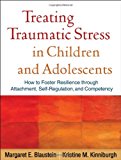Stress Test: Reflections on Financial Crises Reviews
Stress Test: Reflections on Financial Crises
- Stress Test Reflections on Financial Crises
New York Times Bestseller
Washington Post Bestseller
Los Angeles Times Bestseller
Stress Test is the story of Tim Geithner’s education in financial crises.
As president of the Federal Reserve Bank of New York and then as President Barack Obama’s secretary of the Treasury, Timothy F. Geithner helped the United States navigate the worst financial crisis since the Great Depression, from boom to bust to rescue to recovery. In a candid, riveting, and historically i
List Price: $ 18.00
Price:
Treating Traumatic Stress in Children and Adolescents: How to Foster Resilience through Attachment, Self-Regulation, and Competency
- Treating Traumatic Stress in Children and Adolescents How to Foster Resilience Through Attachment Self Regulation and Competency
Grounded in theory and research on complex childhood trauma, this book provides an accessible, flexible, and comprehensive framework for intervention with children and adolescents and their caregivers. It is packed with practical clinical tools that are applicable in a range of settings, from outpatient treatment centers to residential programs. Rather than presenting a one-size-fits-all treatment model, the authors show how to plan and organize individualized interventions that promote resilien
List Price: $ 50.00
Price:





The detail is amazing, but not in the least boring,
Another great view on the financial crisis,
This book should not be taken as “stand-alone” but read in the context of all the other ones out there about the crisis itself. It helps one to form their opinions in a clear and more fair way in my opinion.
Finally, this book also help show that the work of the Treasury, Federal Reserve, and other institutions that prevented the crisis relied on countless individuals who never get recognized for their hard work and countless hours helping make this country better. My admiration and gratitude only got bigger after reading this account.
This book is the single best insider look at the events leading up to the …,